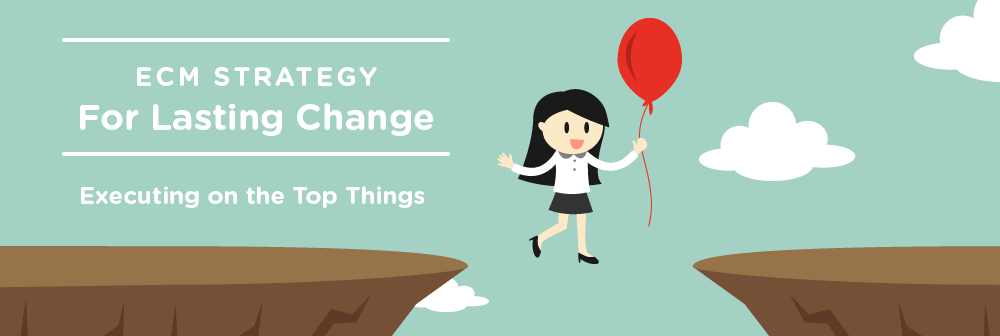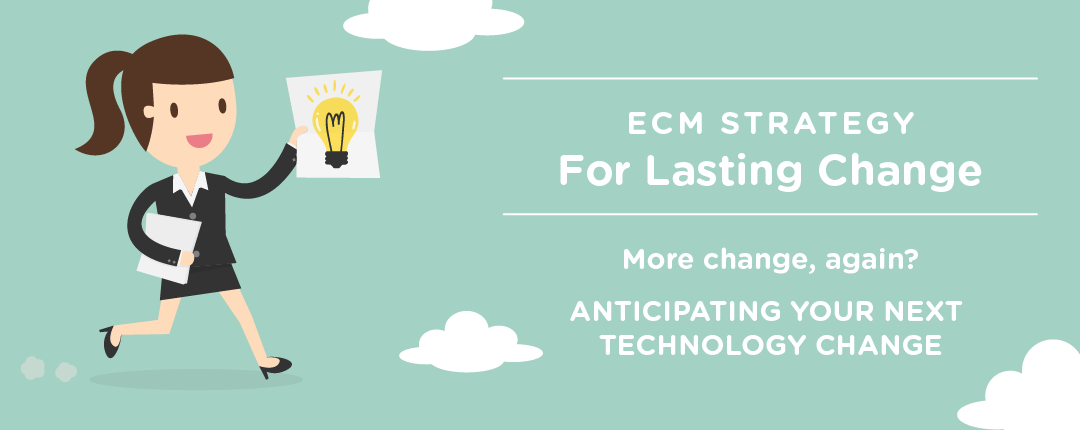ECM Strategy for Lasting Change: Blog Series Introduction
More than any other part of executing on enterprise content platform projects, strategy planning is often the most neglected. So many organizations spend months, maybe even years working on RFPs, analyzing spreadsheets of features, and participating in vendor demos to select the most appropriate technology platform for their organization. And then—possibly due to excitement, impatience, or pressure over signing on the line for a major software platform purchase—these same organizations barrel into installation and implementation of the platform. After all, most have had a failing platform in place for years, and it’s way past due for replacement.
Many organizations believe they know intricately how their business functions, and with all the spreadsheets of features and functions in hand, are itching to get the new technology in place to support it. But therein lies one of the biggest mistakes in rolling out ECM platforms; one that in my experience, accounts for the most rescue or redo projects in this space. I call it the circumstance of “getting going before knowing.”
This is the introduction for a five-part series on how to incorporate content strategy techniques in a way that drives success for ECM platform projects, aiming to ensure impactful, lasting change. If you are embarking on an ECM refresh or rollout this year and don’t want to be revisiting where you are in two to three years, read on.
We’ll be publishing a series of posts on the topic of ECM strategy covering useful techniques to employ throughout the lifecycle of projects, not just as an exercise to begin and be done with in the early stages. I hope to give you several key things to think about with each post, and tips to get you going in the right direction when traction is slipping. Feel free to add your thoughts, suggestions, and comments as we go along.
Some of the topics I’ll cover in this series are:
- Planning for successful technology change
- Executing on the top things
- Measuring value and success of what’s been done
- Anticipating your next technology change
- Sustaining technology success





